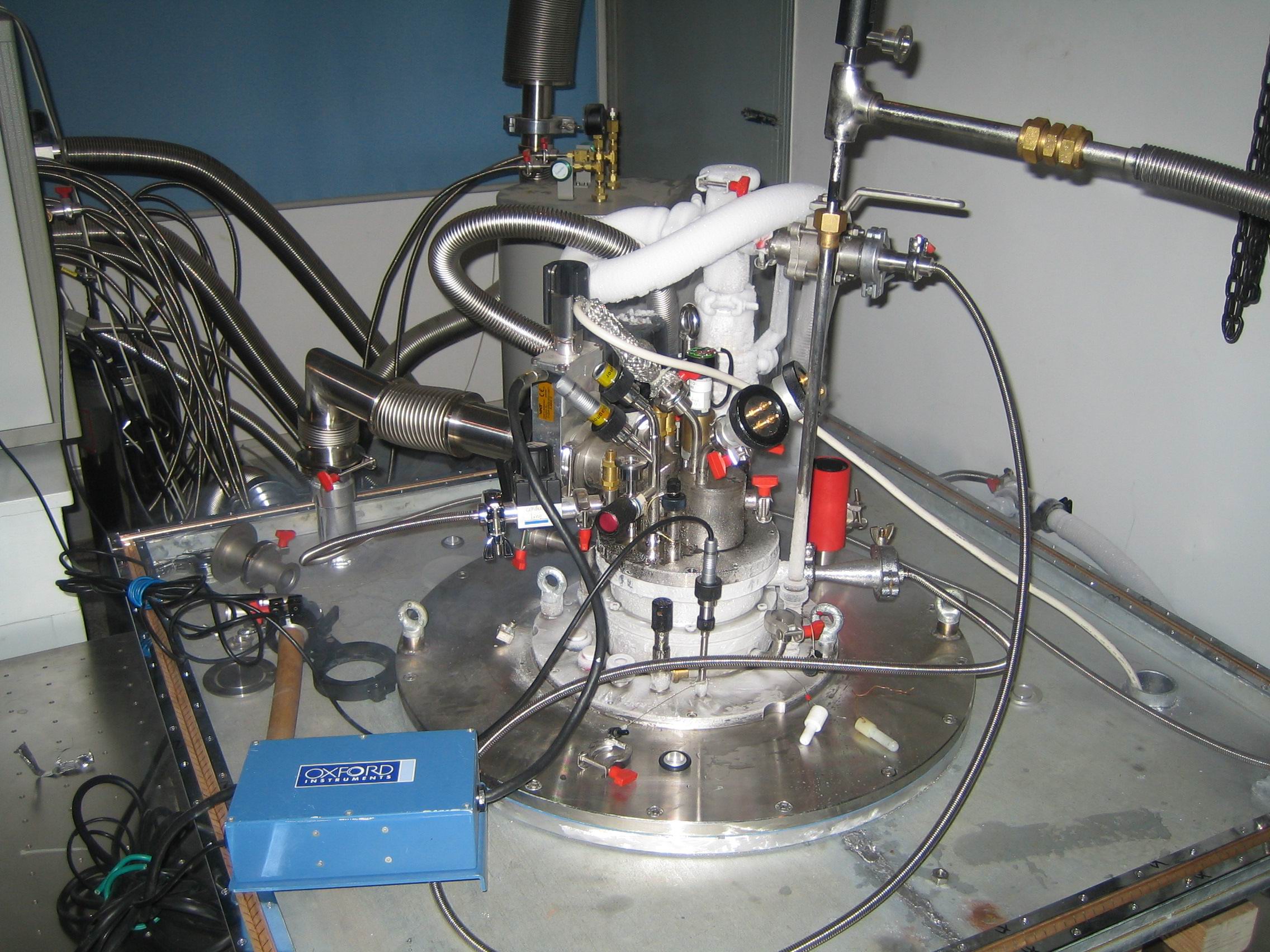稀释制冷机(Dilution refrigerator)原理
1951年H.London提出可以用超流4He稀释3He的方法制冷的理论。到1965年P.Das等人根据这一理论制成了3He-4He稀释制冷机,目前已达到2mK的低温。它可以长时间地维持毫K范围的温度,有较大的冷却能力,已成为获得毫K温度的最重要的手段和设备。
3He,4He的混合液在0.86K以上时,液3He可以以任何比例溶解在液4He中,但是当混合溶液的温度降到0.86K以下时,混合液则分离成两相,其中含3He多的相称为浓缩相,而含3He少的相称为稀释相。在低于0.86K的任一温度都对应于一定的3He含量的稀释相和浓缩相,并达到相平衡。当从稀释相中取走3He原子时,为了保持两相的平衡,则由浓缩相中的3He通过相界面进入稀释相以补充被移去的3He原子。可以计算得3He在稀释相中的焓和熵比在浓缩相中要大得多。所以这种稀释过程需要吸热,利用这个吸热现象制成了稀释制冷机。
从稀释制冷机的结构图来看,包含相界面的室称做混合室,3He原子从浓缩相经过相界面进入稀释相要吸热而制冷,使温度降低。包含稀释相的自由表面的室称为蒸馏室,温度维持在0.6~0.7K。此时3He的饱和蒸气压远高于4He的饱和蒸气压,可以用抽气机抽走,这时浓缩相中的3He原子就不断地通过相界面进入稀释相,抽走的3He经过冷凝再补充到浓缩相中形成循环,使制冷机不断地运行。
***************************************************************
Dilution refrigerator
From Wikipedia, the free encyclopedia
Jump to: navigation, search
Helium Dilution RefrigeratorA dilution refrigerator is a cryogenic device first proposed by Heinz London. Its refrigeration process uses a mixture of two isotopes of helium: helium-3 and helium-4. When cooled below approximately 870 millikelvin, the mixture undergoes spontaneous phase separation to form a 3He-rich phase and a 3He-poor phase.
As with evaporative cooling, energy is required to transport 3He atoms from the 3He-rich phase into the 3He-poor phase. If the atoms can be made to continuously cross this boundary, they effectively cool the mixture. Because the 3He-poor phase cannot have less than 6% helium-3 at equilibrium, even at absolute zero, dilution refrigeration can be effective at very low temperatures. The volume in which this takes place is known as the mixing chamber.
The simplest application is a “single-shot” dilution refrigerator. In single-shot mode, a large initial reservoir of helium-3 is gradually moved across the boundary into the 3He-poor phase. Once the 3He is all in the 3He-poor phase, the refrigerator cannot continue to operate.
More commonly, dilution refrigerators run in a continuous cycle. The 3He / 4He mixture is liquified in a condenser, which is connected through an impedance to the 3He-rich area of the mixing chamber. Atoms of 3He migrate across into the 3He-poor phase, providing cooling power, and then into a still where the liquid 3He evaporates. Outside the refrigerator, this gas is pumped up to a higher pressure and usually purified, and finally returns to the condenser to start the cycle again.
Continuous-cycle dilution refrigerators are commonly used for low-temperature physics experiments. Temperatures below 2 millikelvins can be achieved with the best systems.
